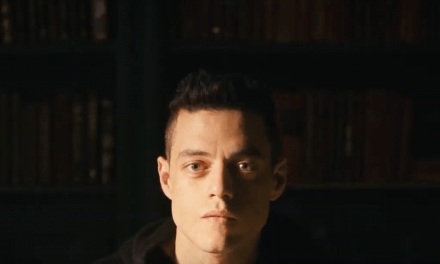Google, that old faithful of lazy scholars undertaking armchair proxy research, tells us that about 280,000 sites offer “Television is Dead”.
The expression even has its own site though the title is slightly misleading.
“TV is Dead” has a million more and Britain’s Channel 4 has a series.
Damon Lindelof, ‘co-creator’ of Lost (2004-10) says ‘Television is dying‘.
Tim Kring, ‘creator’ of Heroes (2006-10), tell us people who viewed his masterpiece on network TV are ‘saps and dipshits who can’t figure out how to watch it in a superior way’. (That would be, as Bill Grantham put it to me, with small screens and degraded sound)?
The venerable Associated Press avows that ‘Television has made billions based on how many people watch a show at its regular time. That idea may already be obsolete’.
And the former chief of Activision, which makes Tony Hawk (1999-) and Guitar Hero (2005-), informed the BBC that ‘Video games are poised to eclipse all other forms of entertainment.’ TV is ‘stagnating or contracting’.
Slightly more judicious, IBM told us that 2006 was ‘The end of television as we know it’.
 Every year, every season, every week, pundits celebrate or lament what they divine as the passing of the mass audience. The mysterious disappearance of this group is understood as the demise of terrestrial, broadcast TV.
Every year, every season, every week, pundits celebrate or lament what they divine as the passing of the mass audience. The mysterious disappearance of this group is understood as the demise of terrestrial, broadcast TV.
It’s La fin de la télévision [The End of Television] (Missika, 2006) or La televisión ha muerto [Television is dead] (De Silva, 2000).
But here’s the secret: the problems for traditional broadcast networks today are satellite, cable, and genre-dedicated channels; the recession; and piracy—not the loss of an audience for television per se.
Wired magazine, self-anointed sacerdotal figure of middle-aged cybertarianism, says ‘The TV is Dead. Long Live the TV’ because the medium is transforming old production and viewing patterns into new ones.
Wired even recognizes that the truly dead medium is (shhh…..don’t tell) the world wide web. Social networks and software applications, controlled by a small number of institutions, supplant the old fantasy of an open frontier.
Obviously, moving images and sounds can now be sent and received from public spaces, offices, homes, shops, schools, and transportation. The devices used include TV sets, but also computers, telephones, and personal digital assistants. The carriers vary between broadcast, satellite, cable, telephone, and internet. The stations may be public, private, community, or amateur. And the times of watching shift from live to dead.
But TV still dominates as a mode of production, distribution, and reception of the very genres that it helped create. Time-shifting and platform choice are versions of what has long been the dominant norm—watching material produced and bought by television networks.
| Toby Miller is a British-Australian-US interdisciplinary social scientist. He is the author and editor of over 30 books, has published essays in more than 100 journals and edited collections, and is a frequent guest commentator on television and radio programs.
His teaching and research cover the media, sports, labor, gender, race, citizenship, politics, and cultural policy, as well as the success of Hollywood overseas and the adverse effects of electronic waste. Miller’s work has been translated into Chinese, Japanese, Swedish, German, Spanish and Portuguese. He has been Media Scholar in Residence at Sarai, the Centre for the Study of Developing Societies in India, Becker Lecturer at the University of Iowa, a Queensland Smart Returns Fellow in Australia, Honorary Professor at the Center for Critical and Cultural Studies, University of Queensland, CanWest Visiting Fellow at the Alberta Global Forum in Canada, and an International Research collaborator at the Centre for Cultural Research in Australia. |





